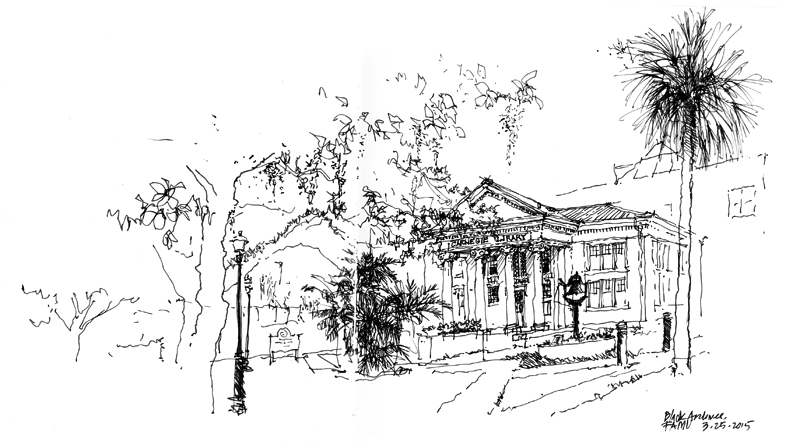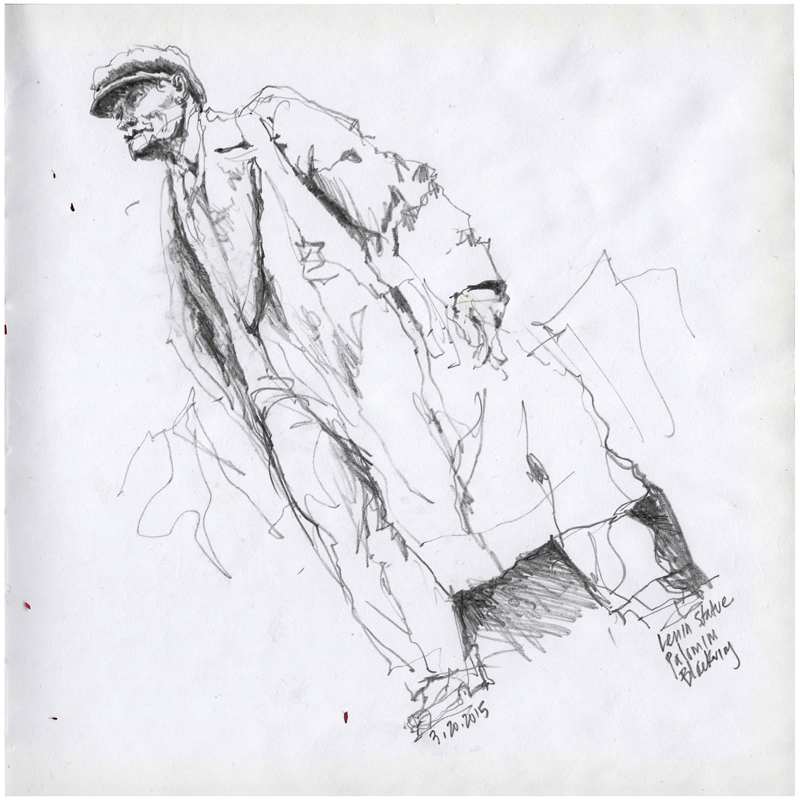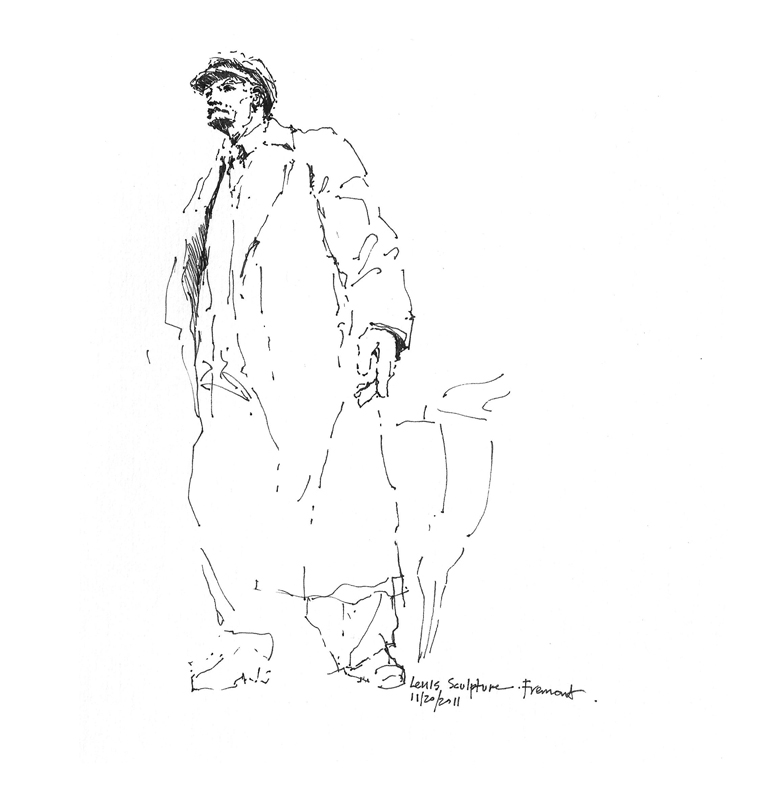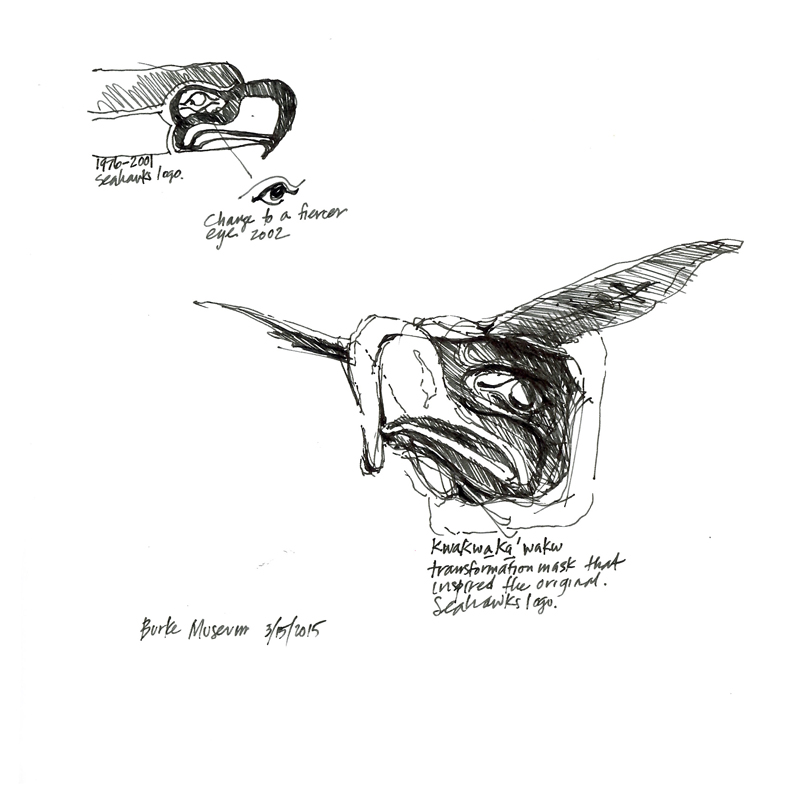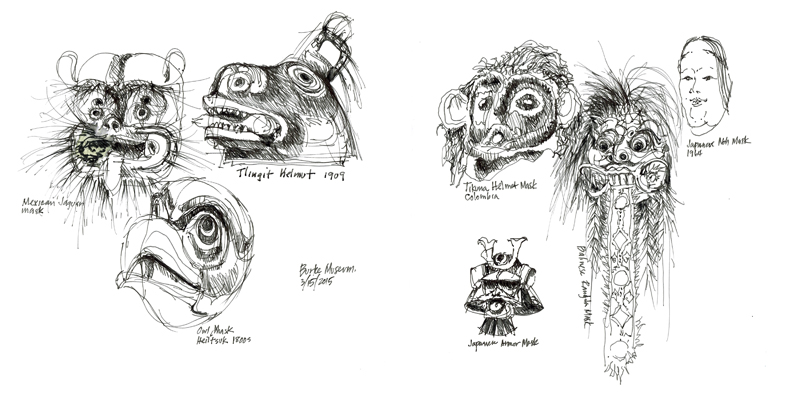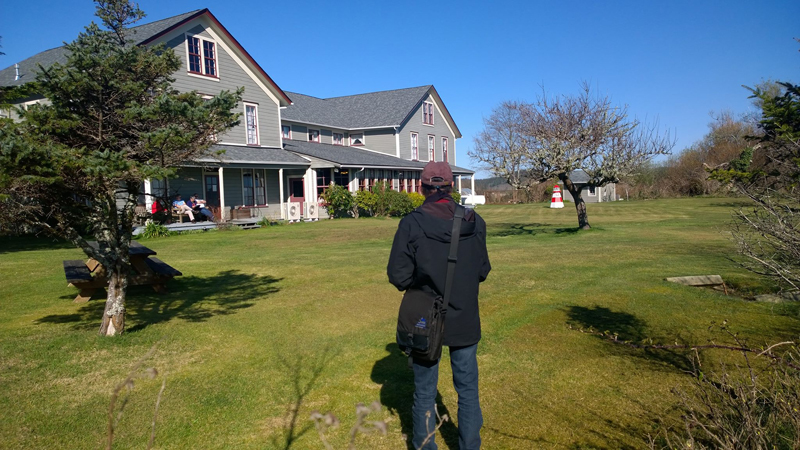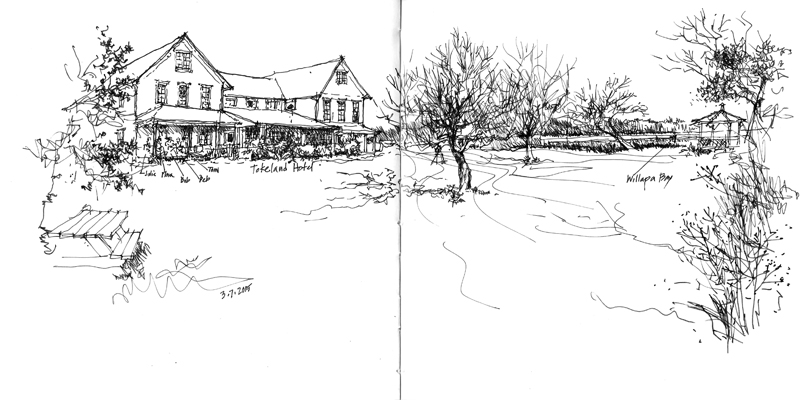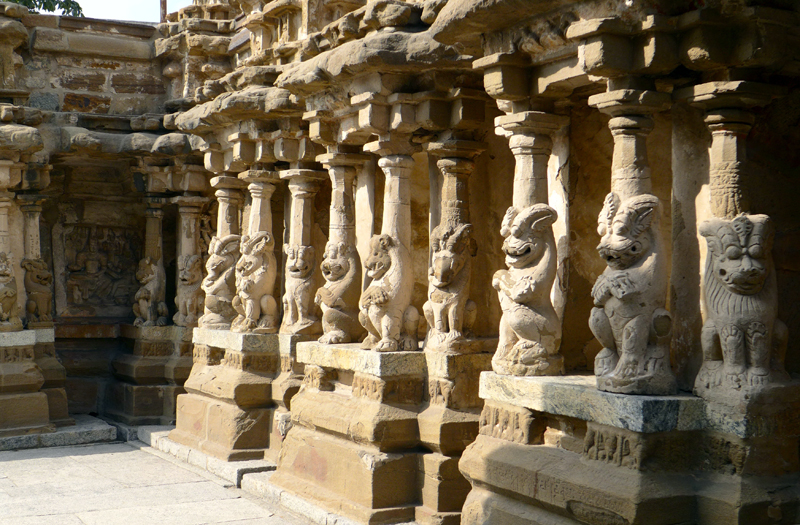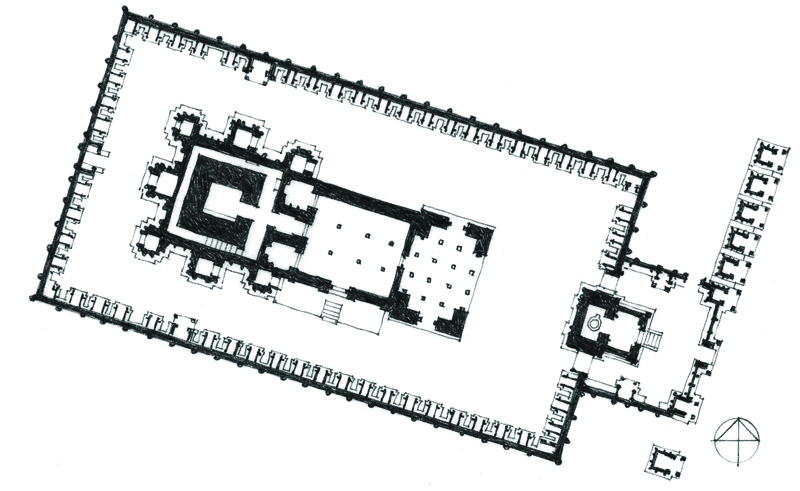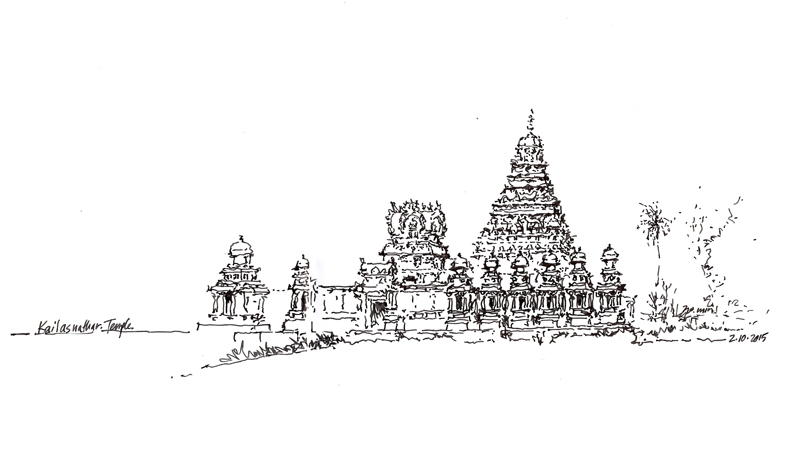Attending a symposium at the School of Architecture and Engineering Technologies at Florida A&M University, I happened upon another Carnegie Library. After FAMU’s first library burned down in 1905, Andrew Carnegie donated funds to rebuild the library. It was the first Carnegie Library to be built on a Black land-grant college campus. After a new university library was built in 1947, this building served several functions until 1976, when it became the home of the Southeastern Regional Black Archives Research Center and Museum
Monthly Archives: March 2015
Palomino Blackwing
Having been given a Palomino Blackwing 602 pencil recently, I wanted to try it out. First produced in the 1930s by Eberhard Faber, the original Blackwing 602 had a firm feel yet the lead also had a softness similar to that of a 6B pencil. The 602 is said to have been favored by several prize-winning writers, musicians, and artists. The line was discontinued in 1998, but Palomino, a California Cedar Products Company with a long history in the pencil industry, re-introduced the Blackwing 602 in 2011 as well as a slightly softer version, which I used to sketch the Lenin Statue in Fremont.
As we can see, graphite pencils are capable of a variety of lines and tones but lack the incisive quality of ink lines. As a light drizzle began to fall as I drew, I also discovered that graphite pencils are capable of drawing even on slightly damp paper. For comparison, I’m reposting an ink drawing of the same subject, which I had done back in 2011.
Pen-and-ink drawings, having only black lines at their disposal, tend to be more abstract and must use hatching, broken lines, and contrast to suggest the gray tones we think we see.
Masks
The Seattle Urban Sketchers met yesterday at the Burke Museum of Natural History and Culture on the University of Washington campus. Among the museum’s collections are masks representing the cultural heritage of the Americas, the Pacific Islands, and Asia. This is the Kwakwaka’wakw transformation mask, depicting an eagle, that is believed to be the inspiration for the original Seahawks logo from 1975.
Masks have been used for millennia in the rituals and ceremonies of different cultures. Here are a few examples from the Burke Museum’s collection.
Drawing objects presents different challenges than when sketching buildings and environments. Instead of depicting forms in space and spatial relationships, we are tasked with capturing both the three-dimensional form of a mask and its unique expressiveness, whether the mask is intended to disguise, protect, or entertain.
Tokeland, Washington
Photo by Flora Goldwaithe
This past weekend, I took a road trip with Deb and friends to Tokeland, Washington, a narrow spit that juts out where the Pacific Ocean curves in to form Willapa Bay. The Tokeland Hotel where we stayed is a National Historic landmark, built in 1885 as a farmstead home and later enlarged in 1899 to become a hotel. Abandoned in 1984, the hotel was restored in 1989 and is now a tranquil getaway in southwest Washington. This is a panoramic view of the “front” of the hotel, set in a meadow facing onto Willapa Bay.
Kailasanathar Temple
At the end of my recent trip to India, Xavier Benedict and I drove down from Chennai to Kanchipuram, where we visited several Hindu temple sites. The most impressive of these was Kailasanathar Temple, the 7th-century Pallava shrine dedicated to the god Shiva. The sandstone structure has weathered over the past 1200 years but is being restored and retains its tiered, sculptural elegance.
While one can read descriptions, study drawings, and pore over photographs of architecture, nothing can compare with actually visiting and experiencing a place. The sights, sounds (or lack thereof), and sense of scale immediately become apparent upon entering. There is no need for any intermediary material. At the conceptual level, however, plans and sections do offer views that can explain the formal layout of a place.
It is Interesting to note the disparity that often exists between reality and how it may be represented. For example, after my visit, I noticed that the plan of Kailasnathar that I had drawn a few years ago is missing columns on the west entry porch.
While I could appreciate the formal order of the temple compound and the artistic expression of the stone carvings, I also realized that not fully understanding the Hindu iconography prevented me from truly appreciating what I was experiencing.

